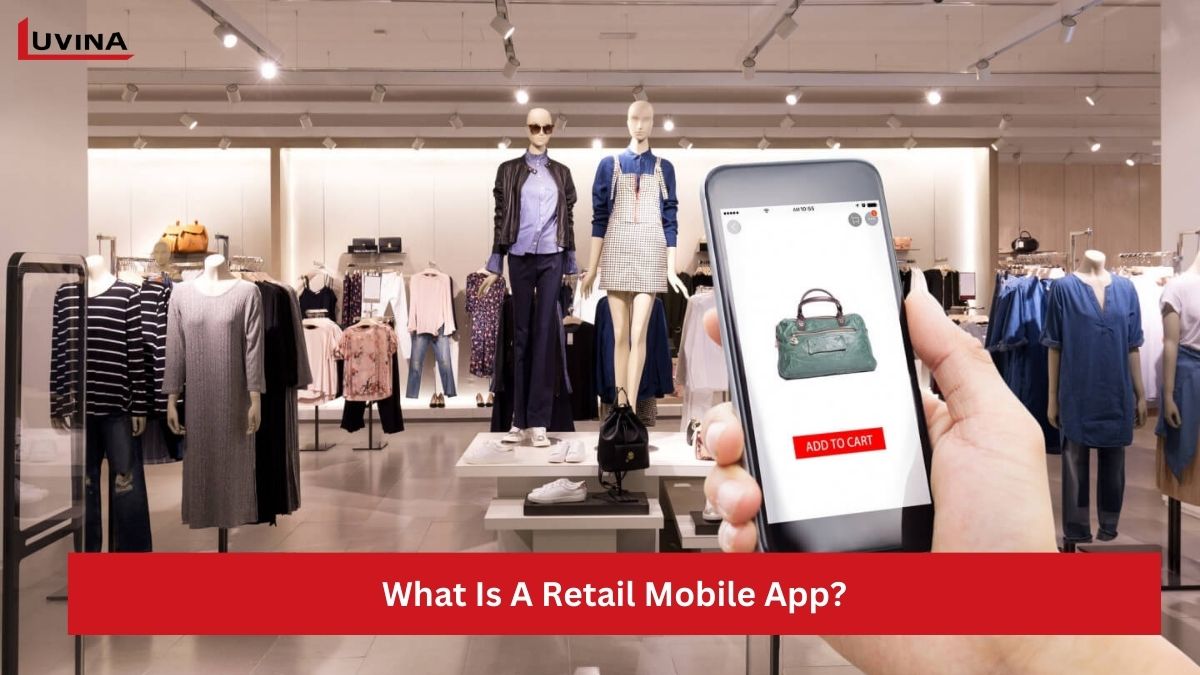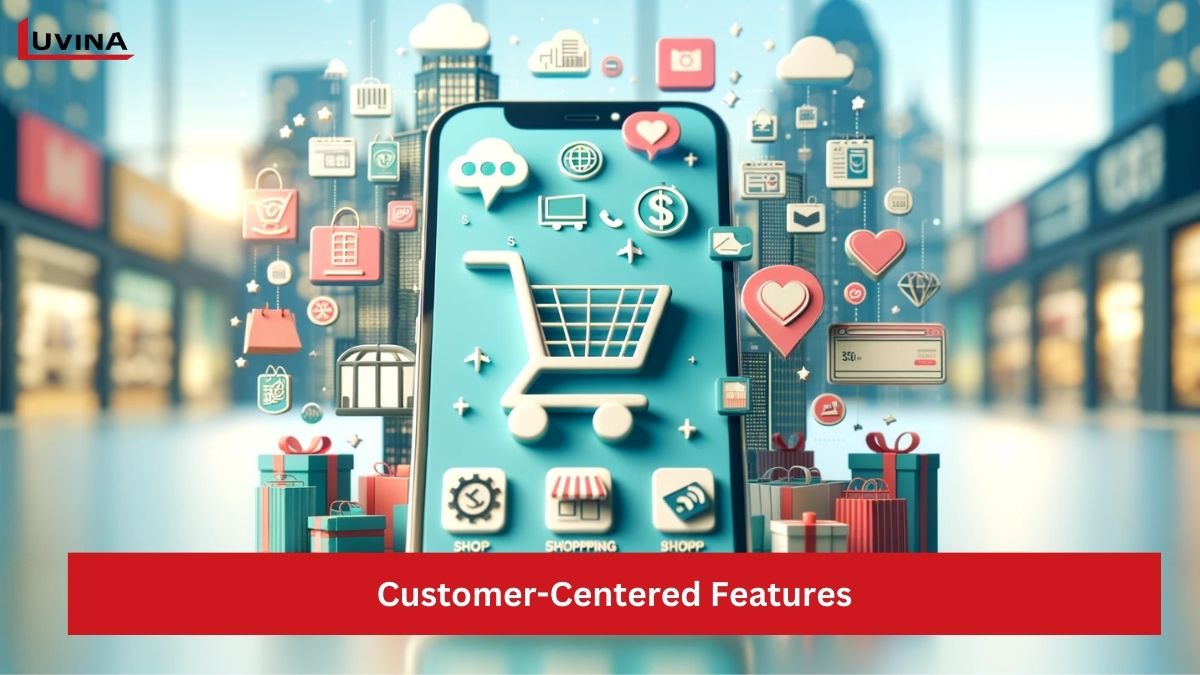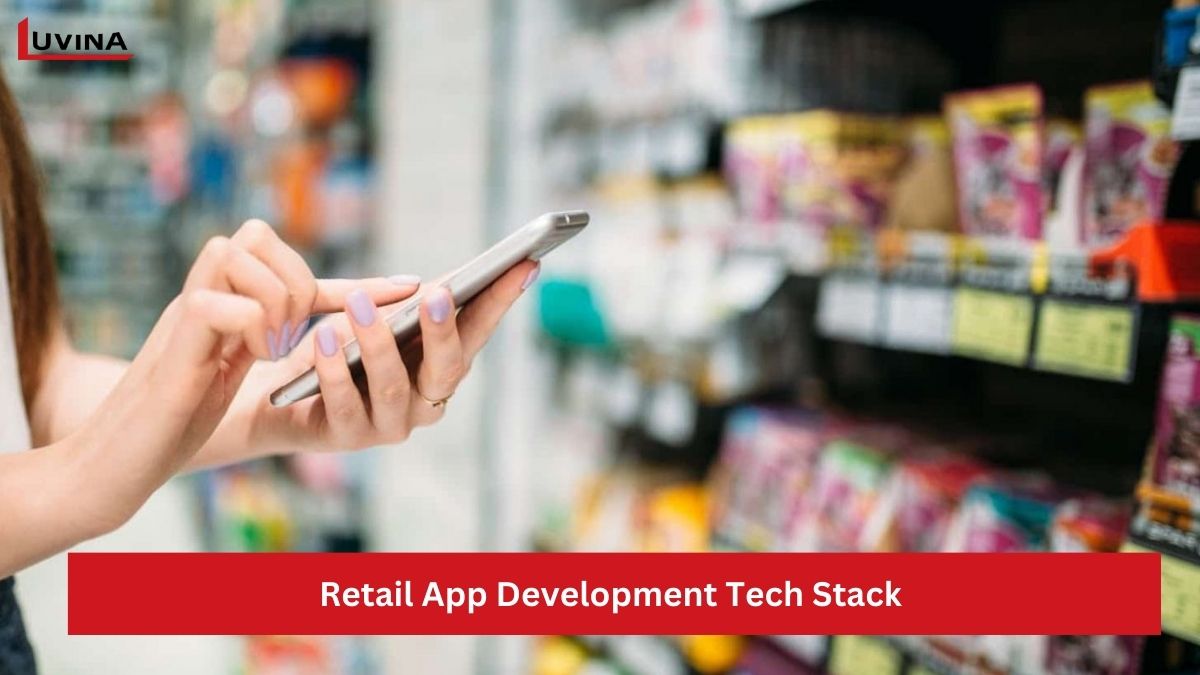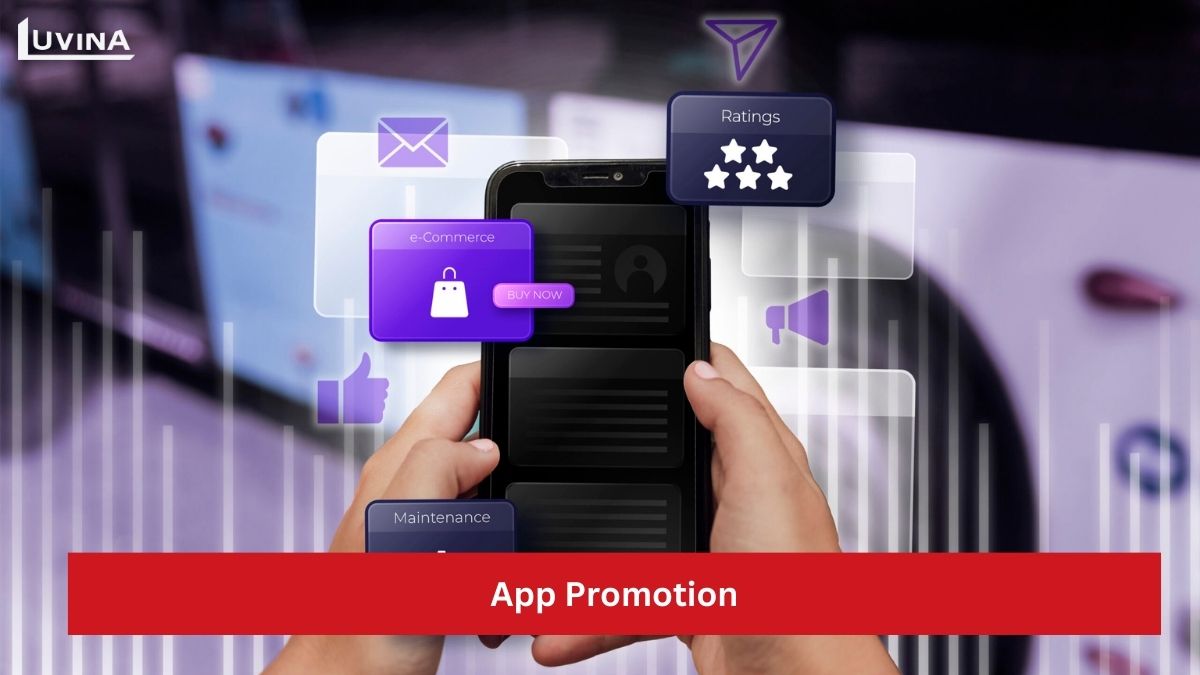Nowadays, the majority of consumers regularly make purchases online using their mobile devices. As a result, retail app development will revolutionize retail for companies across the board. Forecasts indicate that over the next three years, there will likely be a significant increase in total worldwide retail sales. Having a retail mobile app may help firms stand out in the eyes of potential customers.
So, how do you create a retail app? In this article, let’s explore an overview of retail app development, including top features, the retail mobile app development process, estimated costs, and the top tech stacks needed to create an app tailored for your business.
What is a Retail Mobile App?
Retail apps serve as tools for online commerce transactions between customers and sellers. Through retail apps, customers can browse, select, and purchase products or services.

For retailers and store owners, retail app development also helps them gather crucial information about customers to build specific strategies that impact purchasing behavior. For example, retail apps can provide personalized recommendations, loyalty programs, or suitable discount programs tailored to customer needs to stimulate purchasing actions, thereby increasing revenue.
With their high convenience, mobile retail apps are becoming a popular tool that allows users to shop from anywhere.
Top Features of a Retail App
To provide the best experience for customers, here are some of the top features that many retail apps from companies in all fields are integrating:
Clear product categories: To have an appealing and clear product catalog, you should use high-resolution images, write detailed descriptions for each product, categorize products, provide clear notifications about availability, and regularly update the catalog.
Smart search: The smart search feature helps customers quickly find the products they need without much effort.
Product filters: Product filters help customers narrow down the list of items they want to view. They can select criteria such as size, shape, and color to see items that match their preferences. Additionally, you can set product filters based on popularity, price (from low to high), brand, etc. Integrating this feature into your retail app development will help customers increase the likelihood of finding the products they need and making purchases through the app.

Shopping cart and checkout: This process should be as simple and straightforward as possible. You need to allow customers to review the total price of the items before checkout. The UX of this step needs to be intuitive and eye-catching so that customers do not encounter any hassle before making a purchase. As for payment, you should provide multiple payment options (both traditional and digital wallets) to make it easier for customers to make purchases. In addition to credit cards and bank cards, you can add other payment systems, such as Apple Pay or Android Pay.
Customer profiles: Adding a customer profile to the retail app development features will allow customers to save and quickly update their personal information. Additionally, the information in customer profiles will help customers participate in loyalty programs to receive the most suitable discount offers.
Reviews and ratings: Incorporating a reviews and ratings feature into retail app development will help build credibility and trust for your products. Many buyers often rely on feedback and ratings from previous customers before making a decision. Therefore, this will be an important feature for any retail app.
Push notifications: Used to notify users about new product launches, special offers, reminders about items in the cart, etc. However, to avoid annoying customers, this feature needs to be integrated carefully.
Live chat support: Customers can quickly receive assistance or have their questions answered. This can help enhance the shopping experience and customer satisfaction.

Steps in the Retail App Development Process
The process of creating a specific retail app depends on each retail app development company. However, fundamentally, this process typically includes the following steps:
Step 1 – Market Research and Planning
This is the first step in retail app development. During this phase, you’ll need to research business operations to identify your app’s needs. You’ll determine development goals, target customers, and potential challenges.
If you’re partnering with a retail app development company, they’ll use your requirements to designate necessary features for the app and conduct market research to build an MVP.
Step 2 – Define features and tech stacks
You can either undertake this step yourself or, if collaborating with a retail app development company, their experts will be responsible for designating features and suggesting corresponding technologies based on your app requirements. The goal of this stage is to select the best-suited technology stacks for your app requirements. These technology stacks also need to be chosen based on factors such as performance, scalability, and development time.
Some technology criteria to consider at this stage include:
- – Choosing between native or cross-platform development.
- – Selecting backend technologies.
- – Choosing a cloud storage service provider.
- – Choosing between microservice architecture and monolithic architecture.
- – Selecting appropriate communication protocols.

Step 3 – Design
Developing an application that is both aesthetically pleasing and easy to use is the aim of this phase. The application’s general structure and navigation must be logical and visually appealing. In order to do this, work with retail app development firms that are capable of comprehending your needs and producing UI/UX designs that offer a smooth user experience.
Step 4 – Development
This is where you turn your retail app ideas into reality by coding front-end and back-end, integrating necessary features. You can develop the retail app using an agile approach to adjust the app based on real-time feedback continuously. Additionally, during the development process, you also need to implement robust security measures to comply with data protection regulations.
Step 5 – Testing
The testing phase of retail app development ensures smooth operation, helping you identify and promptly address any app-related issues before launch. During this process, you need to ensure that all features work as expected. Features must be tested under various conditions and loads. Additionally, you can gather feedback from users to identify potential issues during app usage. During testing, you also need to check for security vulnerabilities and ensure that data protection measures are working effectively.
Step 6 – Launch and promotion
Your app must be properly launched across all platforms and promoted to your intended market. You must develop all-encompassing marketing tactics, including influencer, email, and content marketing.

Step 7 – Maintenance and updates of retail mobile app development
After launch, the app needs to be ensured to run smoothly and continuously updated based on customer feedback and market development trends. Regular updates are both to add new features to fix operational errors and improve the performance of the app.
How Much Does It Cost to Develop a Retail App?
Retail app development companies could only provide you with an approximate estimate of the app development cost straight away. For instance, depending on the size of the firm, small businesses may have to pay anywhere from $8,000 to $12,000 to create a retail app. Medium-sized businesses may need to set aside between $15,000 and $20,000 for the creation of retail apps, while larger businesses may need to spend between $20,000 and $25,000.
However, estimating the cost of creating a retail app is not simple. A retail app’s construction costs are contingent upon several factors, such as the platform, length of development, complexity, scale, and team location.
For a clearer picture, let’s compare the average costs of developing retail apps for small, medium, and large scales in the table below.
| Features | Development time | Estimated cost | |
| Small App | Basic features such as product catalog, search, and simple payment process. | 2 to 4 months. (Depending on the clarity of client requirements and the efficiency of the development team.) | $20,000 to $50,000. However, if you choose developers from North America and Western Europe, the cost may be higher. |
| Medium app | More advanced features include product recommendations, customer reviews, loyalty programs, social media integration, basic AR functionality, etc. | 4 to 6 months. | $50,000 to $120,000. If using resources in high-wage regions, the estimated cost can exceed $200,000 USD. |
| Large app | Extensive features such as advanced AR/VR capabilities, AI-based personalization, multilingual support, integration with multiple payment gateways, etc. | 6 to 12 months or more. (Depending on the project scope and complexity of features.) | $120,000 to $250,000. |
Tech Stacks of Retail App Development
The tech stack is crucial for retail app development. The best technology-driven apps are built on top-notch technology stacks. If you’re planning to develop a retail app for your business, here are some optimal tech stack suggestions for you.
| Functions | Tech Stack |
| Frontend Development | JavaScript, Swift, Kotlin |
| Backend Development | Python, Node.js, Java |
| Real-Time Data Management And Processing | Apache Kafka |
| Frameworks | Hadoop, Apache Storm, Hub Framework, React Router |
| Client-side development | HTML, CSS, JavaScript, Bootstrap |
| Push Notifications | Firebase Cloud Messaging (FCM), Apple Push Notification Service (APNs), Pusher |
| Payment processing | Stripe, PayPal, Square, Braintree |
| Database | MongoDB, MySQL, Redis, PosgreSQL |
| Cloud services and hosting | AWS (Amazon Web Services), Google Cloud Platform (GCP), Microsoft Azure, Amazon S3, Google Cloud Storage, Firebase Hosting, Amazon RDS, Google Cloud SQL, MongoDB Atlas, Dataproc |
| Authentication and security | Firebase Authentication, Auth0, OAuth, JWT, SSL/TLS certificates, HTTPS, OWASP (Open Web Application Security Project) guidelines |
| Testing and Deployment | Jest, Enzyme, XCTest, Espresso, Jenkins, Travis CI, CircleCI |
| Other Utilities | Swagger, Confluence, MailChimp |
Conclusion
Hope the article with the useful information above has helped you understand every aspect of retail app development, including important features, estimated costs, and the technologies needed in this process. Developing a retail app is not a simple task. The key to success lies not only in preparing a detailed plan but also in having an experienced partner who can help you create outstanding apps.
Luvina has contributed to the success of many retail app development projects. We will accompany you through every stage of the app development process. If you are looking for a reliable partner, contact Luvina today so that we can listen to your requirements and provide the most suitable solutions. You understand that only reputable retail mobile app development companies like Luvina can help you create high-quality apps at the most optimal cost. Collaborating with Luvina will be an excellent choice and the first step on the journey to achieving successful business goals.
To learn more about the Retail industry, check out these additional resources:









Read More From Us?
Sign up for our newsletter
Read More From Us?
Sign up for our newsletter